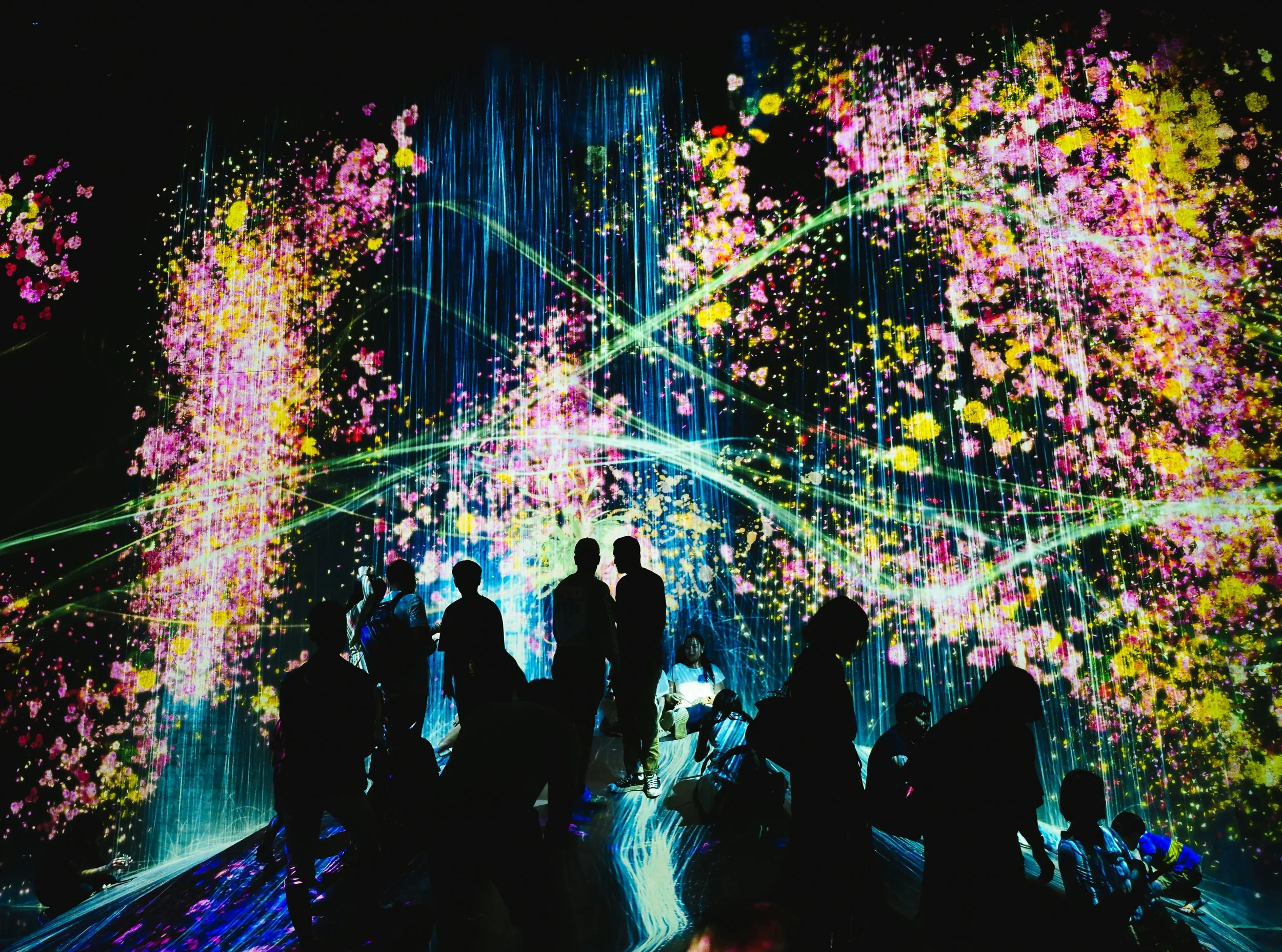teamlab: borderless or planets?
TeamLab Borderless vs. Planets: Which Tokyo Digital Art Experience Should You Choose?
Tokyo's teamLab museums have revolutionized digital art experiences, but with limited time and premium ticket prices, many visitors face a difficult choice: teamLab Borderless or teamLab Planets? Both offer mind-bending immersive art, yet each provides distinctly different experiences that cater to different preferences and travel styles.
The Essential Differences
TeamLab Borderless is about exploration and discovery. This massive 10,000-square-meter space in Azabudai Hills features over 60 artworks that flow seamlessly between rooms without boundaries. Visitors spend 2-4 hours wandering through interconnected spaces, discovering hidden rooms and watching digital creatures migrate between installations.
TeamLab Planets focuses on physical immersion and body engagement. Located in Toyosu, this smaller venue features eight major installations designed specifically for tactile interaction. Visitors walk barefoot through water, lie on soft surfaces, and become part of the artwork through direct physical contact.
Choose Borderless If You...
Love exploration and discovery - Borderless rewards curiosity with secret rooms, hidden pathways, and artworks that only appear under specific conditions. The space functions like a digital treasure hunt where each visit reveals new discoveries.
Prefer longer, leisurely experiences - Plan to spend 3-5 hours exploring. The space encourages slow discovery, and rushing diminishes the experience significantly.
Enjoy photography - While photography rules apply throughout, Borderless offers more diverse Instagram-worthy moments across its varied installations.
Travel with older children or adults - The complex navigation and abstract concepts appeal more to visitors who can appreciate artistic nuance and don't mind periods of searching and wandering.
Choose Planets If You...
Want direct physical interaction - Planets prioritizes touch, movement, and sensory engagement. You'll walk through knee-deep water, feel digital koi swimming around your legs, and lie down as flowers bloom across your body.
Have limited time - The structured 1-2 hour experience moves visitors through installations in a more predictable timeframe, making it easier to plan around other Tokyo activities.
Travel with young children - The tactile experiences and shorter duration work better for families with small children who might find Borderless overwhelming or too lengthy.
Prefer guided experiences - Planets' more linear flow provides clearer direction, reducing the potential frustration of getting lost or missing key installations.
Practical Considerations
Tickets and Timing - Both venues require advance booking, often weeks ahead for popular dates. Borderless tickets are slightly more expensive but offer longer experiences. Planets operates with timed entry slots that help manage crowds but limit flexibility.
Location and Access - Borderless is located in Azabudai Hills, offering convenient access to central Tokyo and upscale Roppongi area dining and shopping. Planets in Toyosu provides easy access to the Tsukiji area and waterfront attractions.
Clothing Requirements - Planets requires removing shoes and socks, and some installations involve water up to knee-deep. Wear comfortable clothes you don't mind getting slightly damp. Borderless has fewer clothing restrictions but avoid loose items that might interfere with sensors.
Crowds and Comfort - Both venues can feel crowded during peak times, but Borderless' larger space generally feels less claustrophobic. Planets' water-based installations create natural bottlenecks that can test patience during busy periods.
The Verdict
For first-time teamLab visitors: Choose based on your personality and travel style rather than trying to pick the "better" experience. Art enthusiasts and explorers will find Borderless more rewarding, while those seeking unique sensory experiences should choose Planets.
For families: Planets generally works better with children under 12, while Borderless appeals more to teenagers and adults who can appreciate the artistic concepts and navigate independently.
For photography enthusiasts: Borderless offers more diverse visual opportunities, though both venues provide stunning photo moments.
For repeat visitors: Many teamLab fans eventually visit both venues, as each offers unique experiences that complement rather than compete with each other.
Alternative Approach
Consider your overall Tokyo itinerary when deciding. If you're planning multiple art and culture experiences, the shorter Planets visit might fit better alongside other activities. If teamLab represents your main Tokyo cultural experience, Borderless offers more comprehensive immersion that justifies dedicating most of a day to the experience.
Both teamLab experiences deliver on their promise of revolutionary digital art, but they satisfy different desires for discovery, interaction, and engagement. Choose the one that aligns with your travel personality, and you'll leave with memories of one of Tokyo's most innovative cultural offerings.
Alternatively….choose both!

